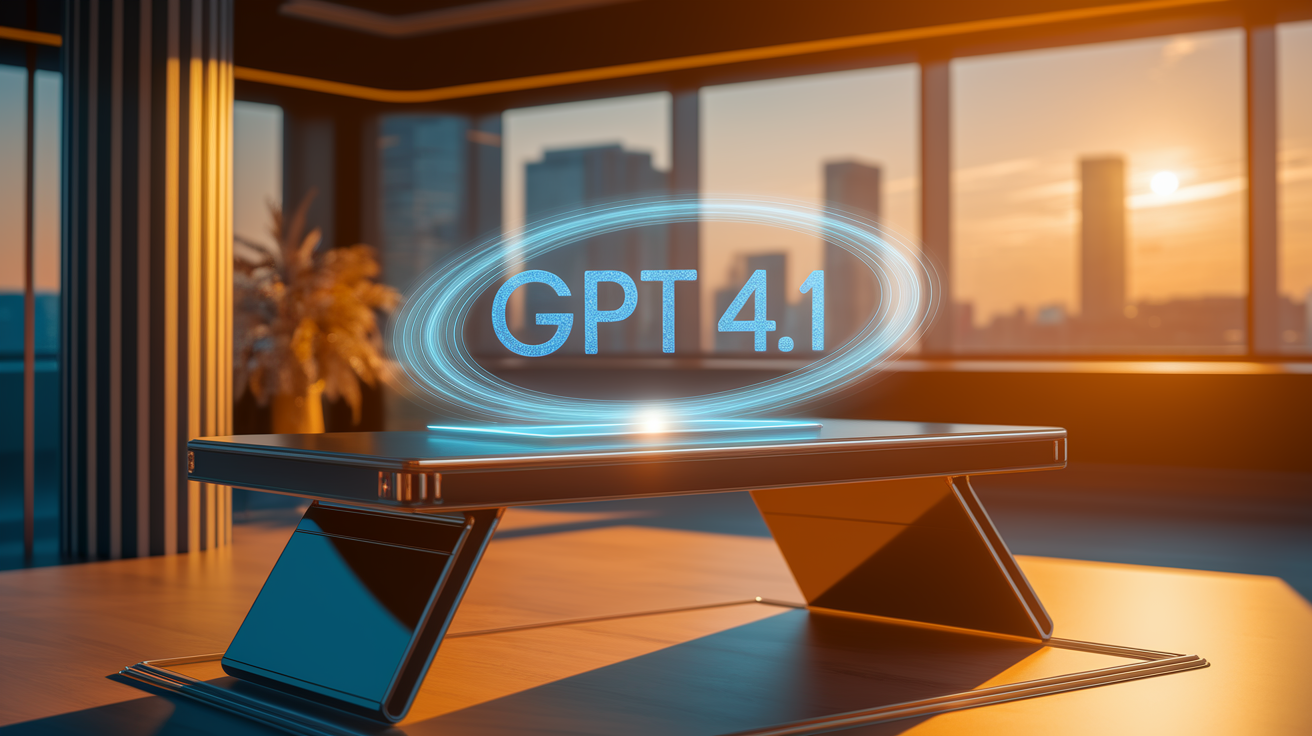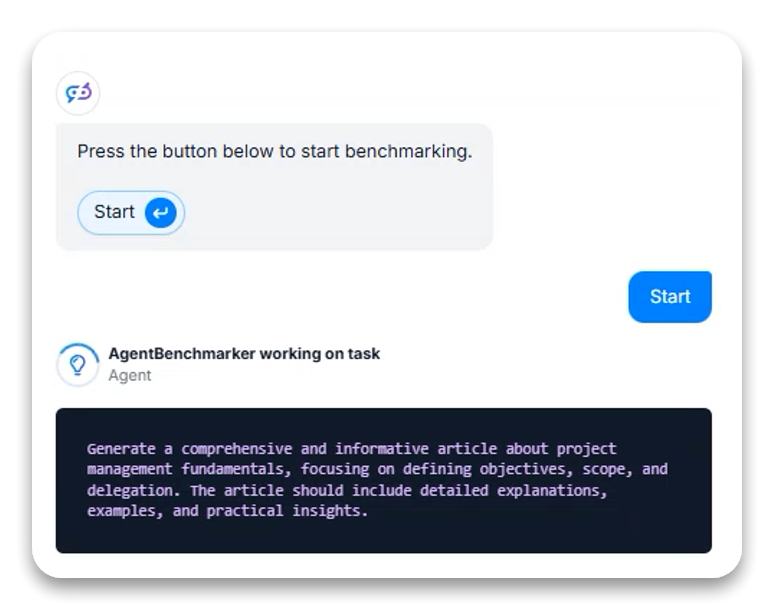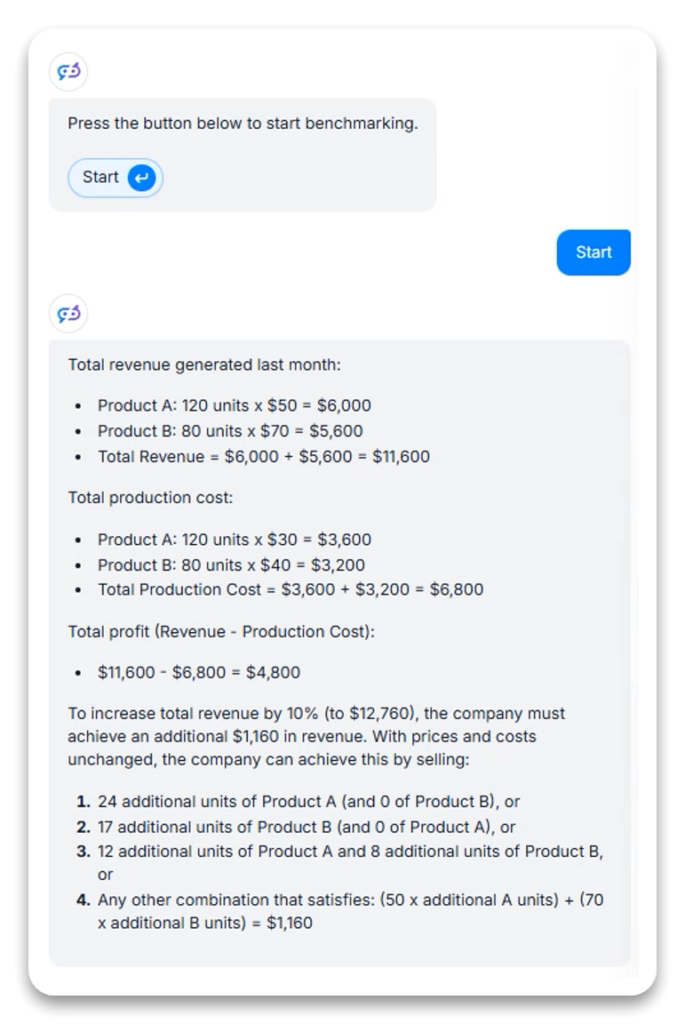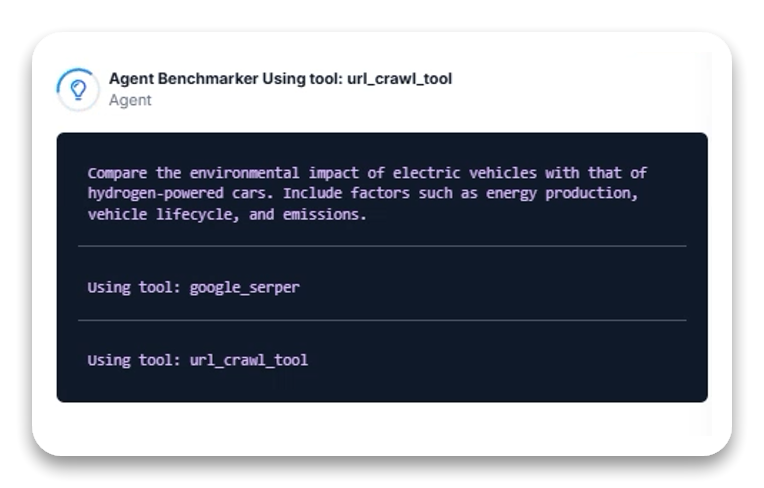
AI Agents: How GPT 4o Thinks
Explore the thought processes of AI Agents in this comprehensive evaluation of GPT-4o. Discover how it performs across tasks like content generation, problem-so...
A deep dive into GPT-4.1’s performance across standard AI tasks, highlighting its reasoning, efficiency, practical applications, and consistent output quality.
OpenAI’s GPT-4.1 represents a significant advancement in AI capabilities, with improvements in reasoning, tool utilization, and output quality. This analysis examines GPT-4.1’s performance across five fundamental task types to provide insights into its practical capabilities and limitations.
The following analysis is based on documented performance of GPT-4.1 across five standard benchmark tasks:
For each task, we evaluate GPT-4.1’s approach to problem-solving, tool usage, processing time, and output quality.
When prompted to generate content about project management delegation best practices, GPT-4.1 demonstrated a streamlined approach:
This performance suggests GPT-4.1 prioritizes efficiency in content generation, moving quickly from information gathering to synthesis without exposing intermediate reasoning steps.
The calculation task tested GPT-4.1’s ability to solve a multi-part business problem involving revenue, profit, and strategic planning.
GPT-4.1’s approach to mathematical reasoning appears to focus on practical business applications rather than abstract mathematical relationships, providing specific solutions rather than generalized equations.
The summarization task revealed GPT-4.1’s efficiency in information distillation:
This performance demonstrates GPT-4.1’s capability to quickly extract and consolidate essential information without requiring explicit reasoning steps for straightforward text processing tasks.
For the comparison between electric and hydrogen-powered vehicles, GPT-4.1 employed its most extensive research process:
This performance suggests GPT-4.1 allocates substantially more processing time to tasks requiring in-depth research and nuanced comparison, prioritizing comprehensive information gathering over speed.
The creative writing task showcased GPT-4.1’s approach to imaginative content creation:
GPT-4.1’s approach to creative writing appears to rely on systematic research and organization before engaging the creative process, suggesting an analytical foundation for imaginative tasks.
Analysis across these five tasks reveals several consistent patterns in how GPT-4.1 approaches different problem types:
GPT-4.1 rarely displays its internal reasoning process, instead showing:
This approach prioritizes efficiency but reduces transparency into how conclusions are reached.
Processing time varies significantly based on task complexity:
This suggests intelligent resource allocation based on task demands.
Despite variations in processing approach, GPT-4.1 maintains consistent output quality across different task types:
For tasks requiring specialized knowledge, GPT-4.1:
These performance characteristics suggest several optimal use cases for GPT-4.1:
The model’s rapid processing of straightforward tasks makes it suitable for:
The willingness to spend extended time on information gathering suggests applications in:
The focus on practical applications and multiple solution paths indicates value for:
GPT-4.1 demonstrates a balanced approach across diverse task types, with particular strengths in efficient information processing and practical application. Its ability to adapt processing time to task complexity while maintaining consistent output quality makes it well-suited for a wide range of business and professional applications.
The model’s “black box” approach to reasoning—showing actions but not intermediate thoughts—represents both a limitation in transparency and an advantage in processing efficiency. For most practical applications, the quality and relevance of outputs appear to compensate for this reduced visibility into the reasoning process.
As organizations increasingly integrate AI assistance into workflows, GPT-4.1’s combination of efficiency, adaptability, and output quality positions it as a valuable tool for knowledge workers across various domains—particularly those who prioritize practical results over process visibility.
GPT-4.1 excels in efficient information processing, consistent output quality, and practical application across content generation, calculations, summarization, comparative analysis, and creative writing. It adapts processing time based on task complexity and offers actionable, well-structured results.
Yes, GPT-4.1 often uses a 'black-box' approach—showing actions and outputs but not revealing its internal reasoning steps. While this boosts efficiency, it reduces transparency into how conclusions are reached.
GPT-4.1 is ideal for efficiency-critical tasks like content creation, summarization, routine business calculations, first-draft creative writing, as well as research-intensive tasks such as comparative analysis and market research, and strategic business decision support.
For complex research and comparison tasks, GPT-4.1 dedicates significantly more processing time and leverages sequential tool use (like search and URL crawling) to gather and synthesize information, ensuring comprehensive and balanced outputs.
Arshia is an AI Workflow Engineer at FlowHunt. With a background in computer science and a passion for AI, he specializes in creating efficient workflows that integrate AI tools into everyday tasks, enhancing productivity and creativity.
Experience the power of AI models like GPT-4.1 in your workflow. Build chatbots, automate tasks, and accelerate your business with FlowHunt.
Explore the thought processes of AI Agents in this comprehensive evaluation of GPT-4o. Discover how it performs across tasks like content generation, problem-so...
Explore the world of AI agent models with a comprehensive analysis of 20 cutting-edge systems. Discover how they think, reason, and perform in various tasks, an...
An in-depth analysis of Meta's Llama 4 Scout AI model performance across five diverse tasks, revealing impressive capabilities in content generation, calculatio...






